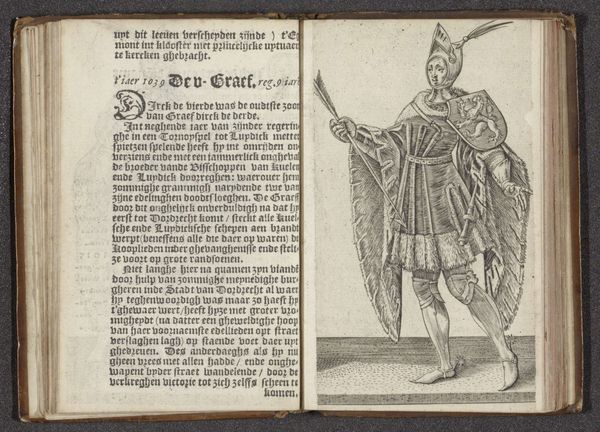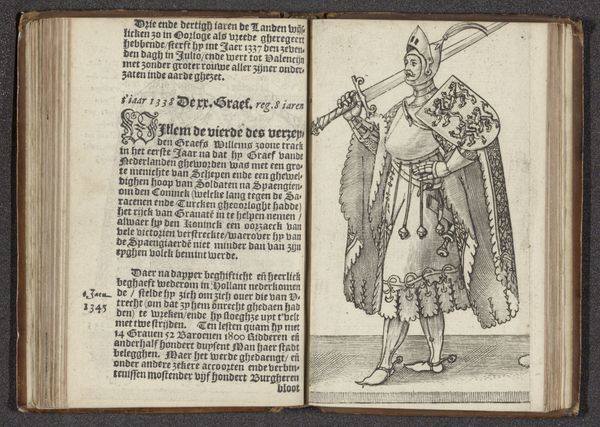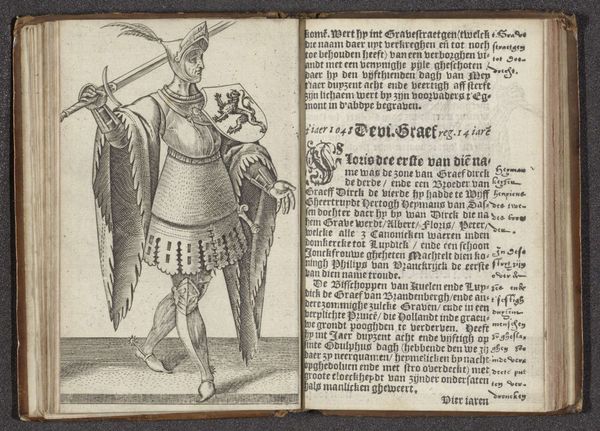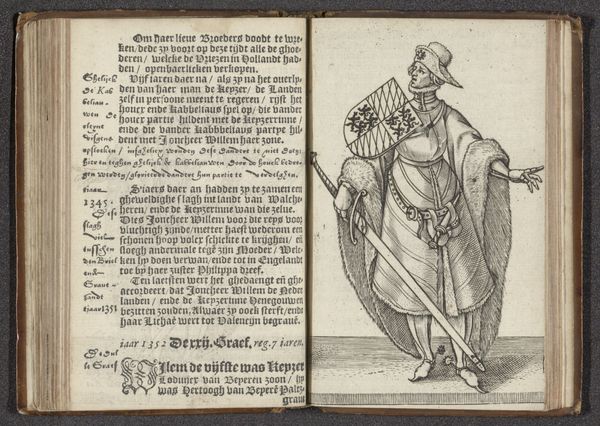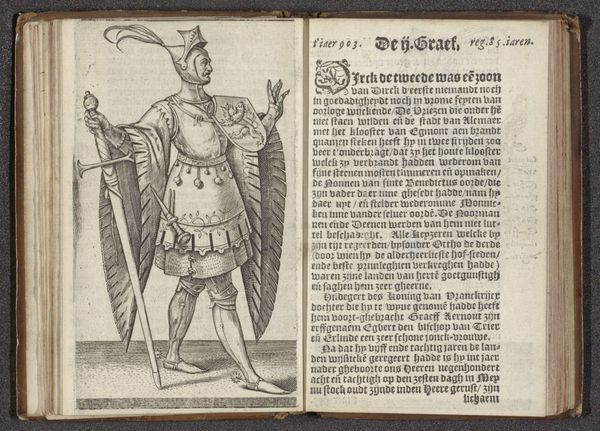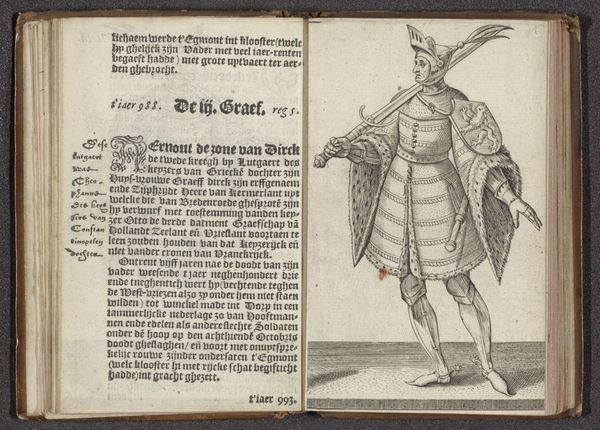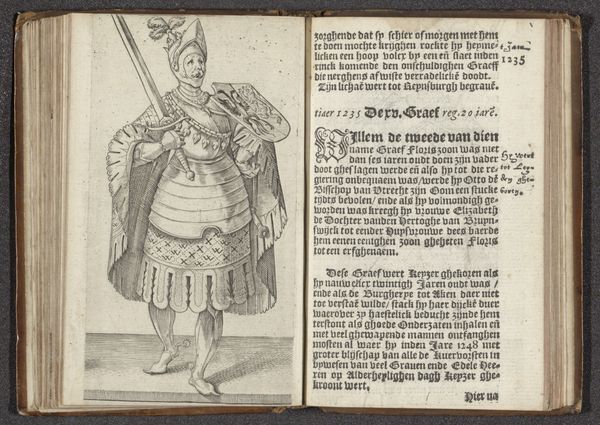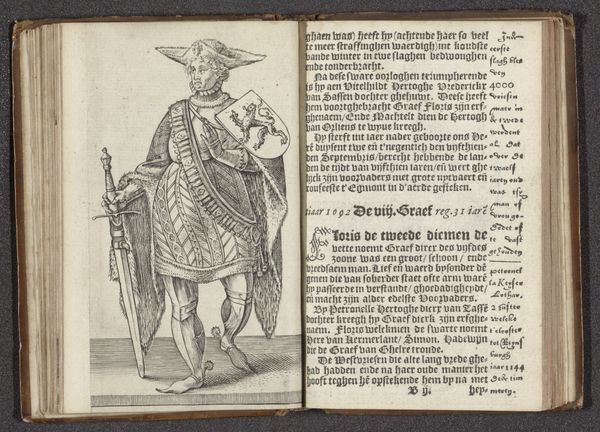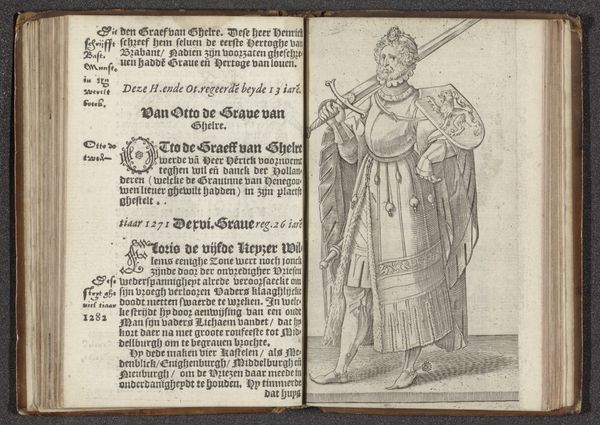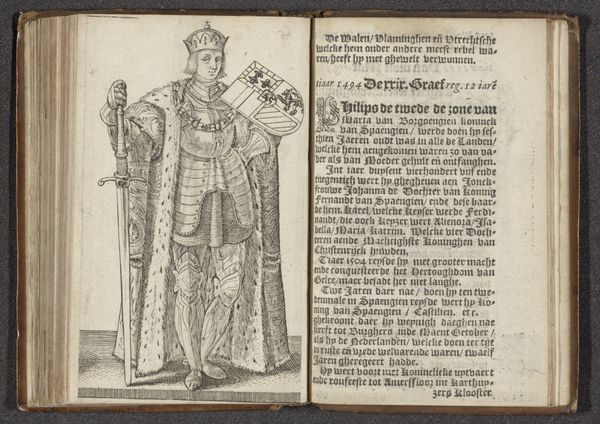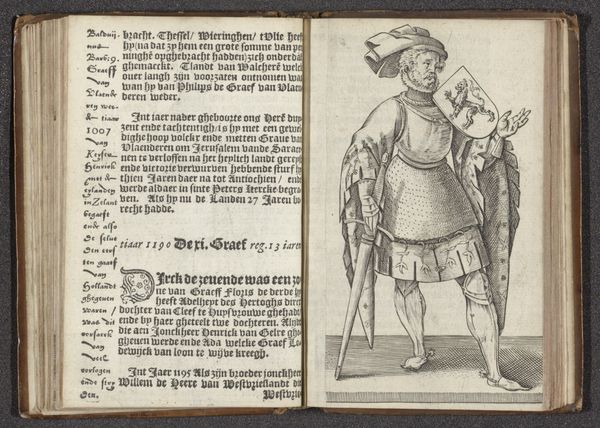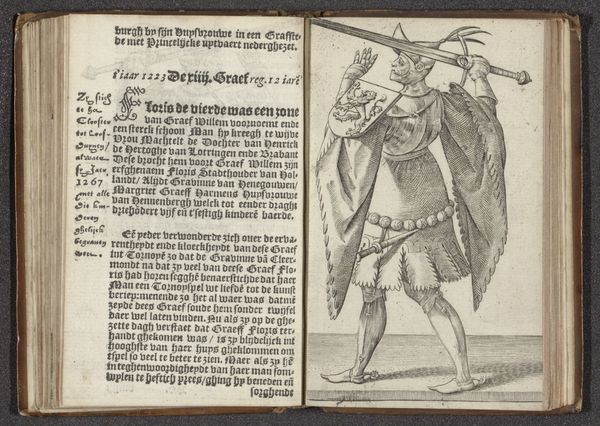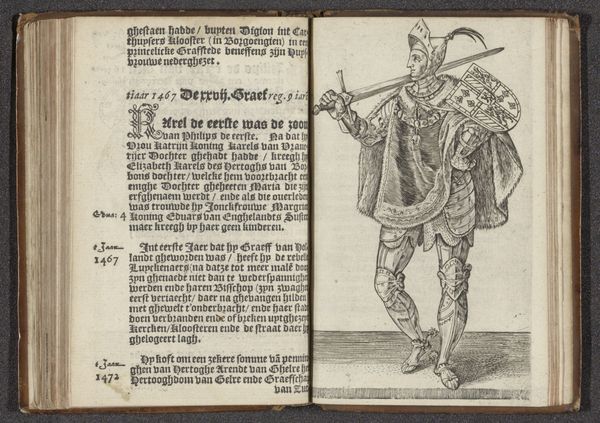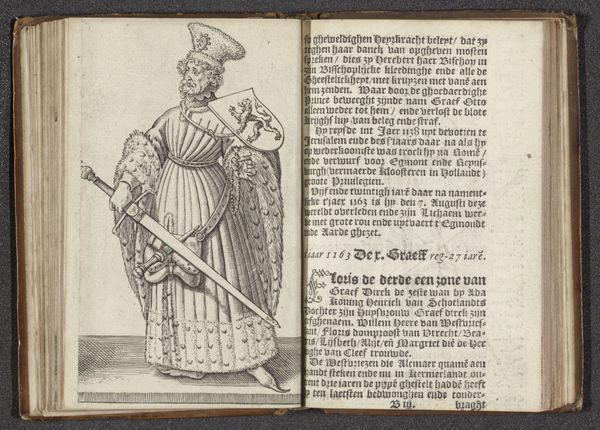
Dimensions: height 135 mm, width 87 mm
Copyright: Rijks Museum: Open Domain
Curator: Let's turn our attention to this engraving, a portrait titled "Graaf Dirk III van Holland," dating from around 1586-1587. Hendrick Goltzius, a prominent figure of the Dutch Golden Age, is credited as the artist. It’s currently held at the Rijksmuseum. Editor: Immediately striking is the almost exaggerated, graphic nature of the image. It feels like it wants to be both representational and symbolic. And it's nestled into what looks like an open book, quite small in scale. There’s a stiffness about the figure; the detail, particularly in the armor and garments, contrasts strangely with his gestural hand. Curator: You've touched on key elements. The book context is critical. This engraving, rendered using lines with clarity, comes from a historical chronicle. It presents Count Dirk III as both a historical figure and a symbol of Dutch identity. His gesture, as you noted, feels deliberate—almost theatrical. Editor: So, it’s an act of nation-building, visually speaking? Creating a historical lineage, mythologizing leadership? I'm intrigued by the blending of detailed realism in the figure with what feels like allegorical posing. It is staged rather than alive. Curator: Precisely. The print serves to anchor this historical narrative within a tangible object, a book. Note the sword, a traditional signifier of power and authority. And the armour itself isn't purely about military might, is it? The engraving lends a sense of gravitas, perhaps legitimising a nascent Dutch identity emerging in the 16th century. It evokes a heroic past, regardless of any specific historical accuracy. Editor: It's clever how an engraving could act as a kind of "portable propaganda," reinforcing the Count's symbolic place through accessible visual media. Makes you think about the power of visual storytelling during periods of significant political change and formation. And the gesture indeed echoes power, control, history! Curator: Absolutely, these printed images circulated widely, solidifying narratives in the public imagination. Editor: It certainly gives a face and form to historical notions, humanizing abstract concepts such as “leadership." Thank you, that was very enlightening!
Comments
No comments
Be the first to comment and join the conversation on the ultimate creative platform.
